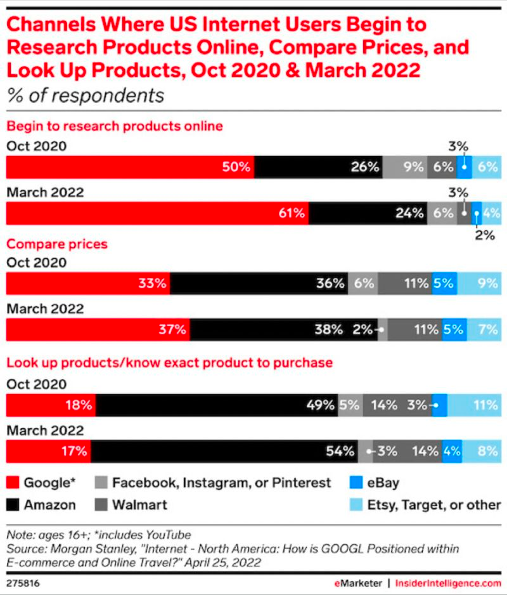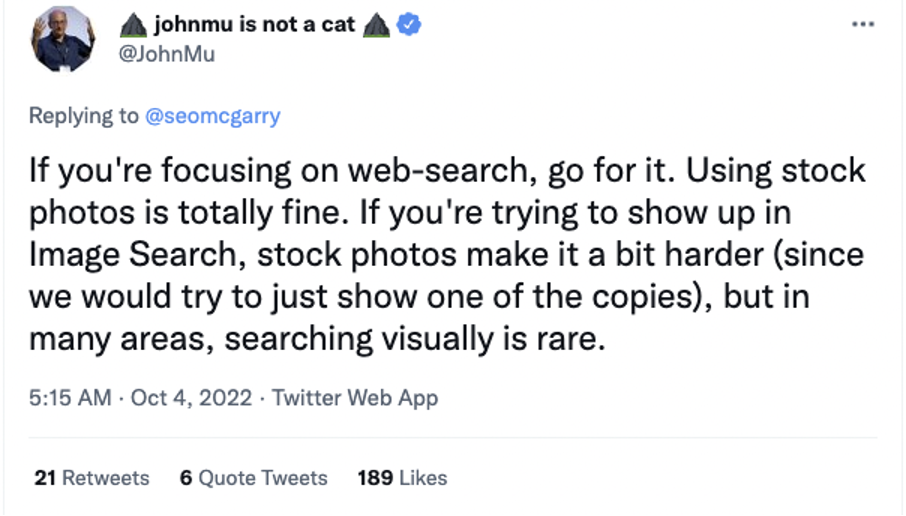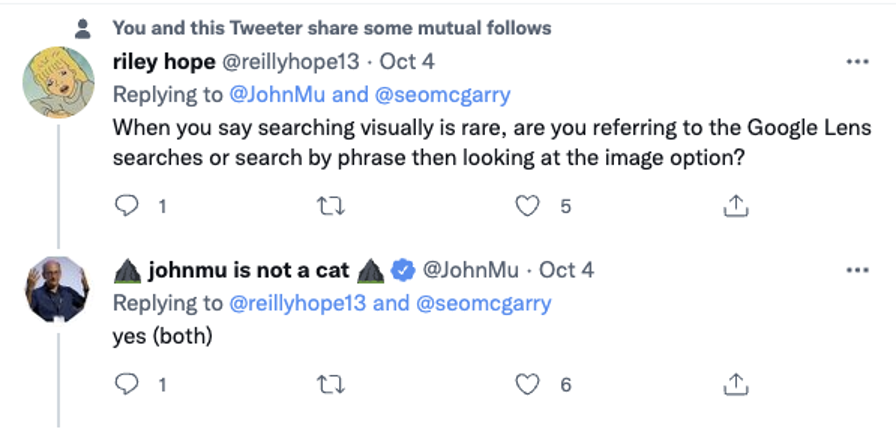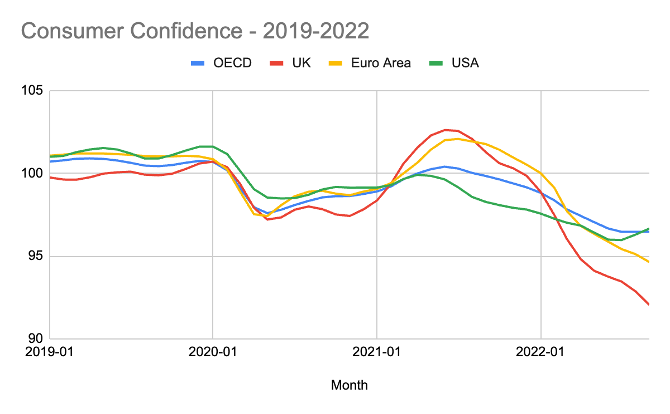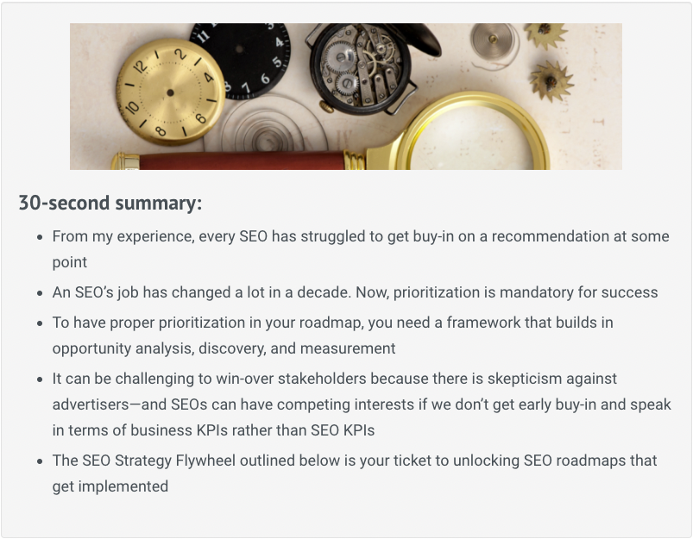SEOpinions Q4 2022 – Tackling competing updates, Google’s Multisearch & more
With all the noise in the SEO industry, it can be hard to know what to prioritize. SEOpinions is a quarterly newsletter by Brainlabs to cut through the cruft, inform you of important SEO updates, and predict upcoming changes so you can prioritize your SEO roadmap accordingly. Read the last edition here.
1. As tech giants fight for power, the offerings become the same
In a sea of sameness, tech giants seem to be reinventing the wheel to convince their existing audience to use them for everything. Companies like Google, Amazon, TikTok, and Meta are working hard to get marginal gains where they can – in new users, revenue, engagement, etc. This is especially true as these tech giants try to diversify their earnings, which is turning out to be a challenge. They all want to be everything and, yet, each of them also wants to be unique.
To compete with Amazon, Google has added organic shopping results to transactional SERPs, and has enhanced local search to be more shoppable to compete with TikTok and Instagram. TikTok has expanded its video descriptions and added shopping features to compete with Google and Amazon. Instagram has added a searchable map to compete with Google and TikTok. Meanwhile, Amazon is improving ambient computing in Alexa to make their voice search more competitive with Google. While the changes are intriguing, it begs the question if the offerings are different enough from the competition.
The speed at which these tech giants are rolling out new features is rapidly increasing. This can be dizzying to marketers as we have to define, test, and redefine new strategies.
So how can you, as a brand, still look different in this sea of sameness?
Action items:
1) Repurpose content across platforms and mediums. Repurposing content on multiple platforms is extremely beneficial, not just to feed two birds with one scone, but also to enhance authority within Google. If you launch a new YouTube video, make sure to cut it down into a TikTok series, Quora/Reddit/Twitter thread, blog post, etc. As Google makes its SERP more visual, your opportunities to own more SERP real estate will improve with posting on multiple platforms. Brands invest a lot in content production. To see ample returns, invest a bit more to make that content useful for various mediums, like graphics, videos, etc.
2) Conduct audience research. Beyond personas, audience research allows you to know who you’re really looking to connect with and where that audience spends their time today. Use a tool like Sparktoro to start on your quest for audience research. Once you are armed with this information, you can understand what types of content an audience engages with.
3) Keep up with new features. Knowing new platform features allows you to be a first-mover on these platforms, which can be an easy way to capture market share while competitors sleep. Subscribe to newsletters like Search Engine Land, or let your agency know to relay new product features and opportunities to keep you abreast of platform changes. Now, not every feature will be a winner—in fact, most won’t—but when you do get a winner and you’re one of the first to already be there, that will pay dividends.
Example: Organic shopping rolled out over 2.5 years ago. Now, with transactional queries, we’re seeing organic shopping take up more of the SERP. Optimizing the shopping feed is now paying dividends—and many late adopters are playing catch-up now.
Takeaway: Adapt your workflow to squeeze as much juice as possible out of content production, invest in audience research, and be a first-mover with new features.
2. Consumers have spoken: Google is a Discovery platform
Google is the discovery platform, while Amazon is the shopping platform. I recognize Amazon may not be relevant for your industry, but there is an “Amazon” in every industry where consumers go to “shop”—take Expedia for travel.
Understanding the entire customer journey is essential to determining the story you want your brand to tell in each phase—and knowing where to invest your time and resources.
While lines continue to blur across the product offering among tech giants, consumers may not be as fickle to change their purchase journeys. We can see that Google (including YouTube) made significant gains in Discovery and Comparison Searches over the last 1.5 years, while Amazon made gains in shopping searches.
Nevertheless, the first touchpoint is essential. This puts Google in a favorable position to own the entire consumer journey, especially as it continues to make the SERP more transactional.
Action items:
1) Lean into the first touchpoint. Use this data to convince stakeholders to also invest in Google and YouTube for discovery, not just performance. Again, that first touchpoint can make all the difference!
2) Conduct audience research. Understand your audience’s purchase journey and where each platform plays a role in their decision-making process.
3) Build a cohesive strategy. Your strategy should consider how that journey plays from start to finish, while also serving folks who may find you somewhere in the middle.
4) Build for effortless transactions. Invest in downstream channels to make the purchase journey as effortless and frictionless as possible.
Takeaway: Google is a powerhouse discovery platform, while Amazon or other industry-relevant sites are used for transacting. Understanding this consumer behavior allows you to develop a full-funnel strategy to fuel ongoing growth.
3. Are you multisearch ready?
At Search On 2022, Google rolled out a fancy new photo-first search feature called ‘multisearch’. It’s available today in the Google app using Lens. This is amazingly cool technology and I can think of using it in some unique ways, such as: searching for translation, discovering new plants, having an image be read for those with eye impairment, etc.— but consumers have been slow to adopt visual search.
For the last twenty years, we’ve seen ‘searcher stubbornness’ hold true with typing in a query and expecting a speedy response—despite the advent of image search (and even voice search), we’re still searching the same way we did decades ago.
John Mueller, Google’s Search Liaison, says:
John was then asked whether he was talking about image search or Google Lens. Turns out, it’s both:
However, while search habits are largely the same, the results we’re served are dramatically different—they’re more visual, more in-SERP, and more personalized (to location, interest, and previous searches). Consumers have responded positively to more visual results in response to their text query, hence why Google has adapted its SERP to include more images and videos. Nevertheless, the point of entry hasn’t changed.
Multisearch is Google’s big bet that searcher habits will expand to include searching and shopping by using images as the core input. Multisearch gives searchers the ability to do just that. Here is an example of what it looks like:
Here is my take: Web search isn’t going anywhere anytime soon, even in the world of voice and image search—but this technology does have use cases that I think will be adopted over time. As of now, this feature is only available on mobile devices via the Google app but I personally hope it extends to Google.com search engine (on mobile and desktop) so we can easily search in the browser, and for screen grabs as well.
Action items:
1) For e-commerce brands:
i. Invest in your shopping feed to ensure that photos are implemented and product attributes are as complete as possible.
ii. Ensure that photos are included in your product schema.
2) Optimize unique images, especially for products or services—with things like image alt-text, understandable file names, and image titles. For products that require some explanation, build custom images explaining features of the product in an attempt to show for image search and via Google Lens search.
Takeaway: Multisearch isn’t going to change the way people search overnight, but it’s clear what Google is aiming for. E-commerce sites should continue to optimize feeds to make shopping as frictionless as possible, even for visual searches. For non-ecommerce sites, if you have additional resources to invest in being a first-mover and improving Google’s ability to find visual information on your site, then you will future-proof your strategy. However, for now, I wouldn’t throw all my eggs in this basket until searcher adoption grows.
4. Tackle economic volatility with confidence as an SEO
While I can’t tell the future, I can say with confidence that the economic times have changed a lot in the last 3 years. Consumer confidence has tanked globally in that time, according to OECD data, which has had a mixed effect on inflation, consumer spending, and company spending.
While I do have an Economics degree, I’m by no means an economist. Even economists have a hard time knowing what’s going to happen next given they’re always looking at lagging indicators. Nevertheless, as a concerned human living among other concerned humans, I want to share my perspective on how to make business conversations easier in this uncertain environment as you try to do the best work of your life.
During times of economic uncertainty, knowing your numbers inside out and building relationships with key stakeholders becomes paramount. This allows you to be healthily critical of strategy shifts, and be in lock-step with other teams/departments so you can work toward the same vision. In times of uncertainty, there is little room for error – and no time for misalignment.
Action items:
1) Keep an obsessive look at your analytics and understand:
a) What channels are driving performance?
Don’t forget about ambient channels and implied attribution. The last thing you want to do is cut off all of your awareness drivers as your funnel will eventually dry up.
b) Draw “insights”, not “findings”
Don’t just share that traffic is fluctuating; uncover why—is it branded/non-branded searches? Is demand down for your category? etc.
Storytelling with insights as opposed to findings is a much easier way to get stakeholder buy-in.
2) Make sure you’re carrying as much due diligence as possible and being critical of every dollar spent. This is an easy way to quickly win over business leaders. When you ask for new tools or team members, make sure that the business case is built in full and you are confident in the numbers (beyond just “needing help”).
3) Focus on squeezing the most out of your hero products. It’s tempting to continuously expand products—I’m a big fan of new product launches myself—but hero products that already make up the majority of revenue are going to be your path of least resistance. Find ways to showcase hero products on the site and in marketing efforts, and explore paths to increasing revenue for those products—through increasing AOV through bundles, or rethinking a subscription model.
4) Use a prioritization model for all SEO work. This is a great way to align with other teams on the most impactful and important projects. The RICE model is my recent favorite as it accounts for Reach, Impact, Confidence, and Effort–which is a good way to align SEO goals with business objectives.
5) Streamline processes and use automation where possible. Finding ways to do things faster, with less input, is always a benefit, but even more so when every dollar is being criticized more than before. Leading the way to improve workflows that open up additional team capacity to make an even larger impact is a huge win.
6) Keep a “win” list that is easily shareable with stakeholders. All of your wins—personal and team wins—should be kept on a shortlist so they’re easily shareable among execs who may ask. And even if they don’t ask, find a way to share those results in a humble and appropriate way.
Takeaway: Economic turbulence is here to stay for the foreseeable future. You can effectively navigate this turbulence by reevaluating how you present information, prioritize projects and communicate.
5. Search Engine Watch: An SEO Strategy Flywheel to Win Over Executives
I was fortunate enough to be featured in Search Engine Watch highlighting the SEO Strategy Flywheel I presented at the SearchLove SEO conference. Using this process can help you scale your efforts as a team—in-house or agency-side.
That’s all the SEOpinions for this quarter, but subscribe to Brainlabs’ blog to catch the next one!
Read previous SEOpinions editions here:


